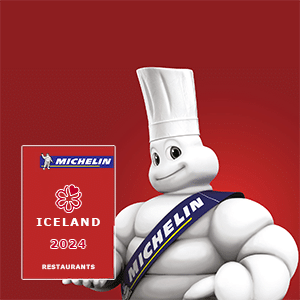Lifid
Good Fish, Bad Fish
The conflicting health information about seafood can make you feel ready to go off the deep end.
First, fish are touted for their health benefits. Then, sometimes soon after, they’re condemned for containing too much mercury, PCBs or other contaminants.
Some health experts worry there’s enough conflicting advice to make the public avoid fish altogether.
„It’s a shame that people are running away from seafood at a time when it gives so many benefits,“ notes William Lands, a retired National Institutes of Health researcher who has studied the healthy fats found in fish.
That could be a big mistake. The benefits of eating seafood „are likely to be at least 100-fold greater than the estimates of harm, which may not exist at all,“ according to Walter Willett, professor of nutrition at the Harvard School of Public Health. He notes that „the kinds of levels of contaminants that are being talked about are not a reason for people to reduce their fish intake.“
Rich in omega-3 fatty acids, a healthy kind of fat, seafood is known to help protect the heart, the brain and the joints.
Reporting in this month’s Journal of the American College of Cardiology, researchers from the Harvard-affiliated Channing Laboratory found that increased fish consumption is linked with a lower risk of irregular heartbeat, which can lead to death. These findings fit with other studies that suggest eating at least two meals of seafood per week has health benefits, including a reduced risk of stroke.
Emerging evidence also suggests that omega-3s, which are most plentiful in deep-ocean fish, could also help prevent, and possibly alleviate, some mood disorders, including depression and bipolar disorder.
The health advantages of eating seafood are sufficiently clear that the U.S. Dietary Guidelines, the American Heart Association, the National Academy of Sciences, and the National Heart, Lung, and Blood Institute recommend fish for at least two meals a week (unless it’s deep-fried).
But concerns about mercury and other potential risks continue to muddy the waters. Both the Food and Drug Administration (FDA) and the Environmental Protection Agency warn young children, women who might become pregnant and those who are pregnant or nursing to completely avoid eating shark, swordfish and king mackerel and to limit albacore („white“) tuna, all of which can be high in mercury.
Mercury occurs naturally in the environment and is also spewed into the air by industrial emissions, particularly from power plants. As the mercury drifts down, it accumulates in streams and oceans, where bacteria convert it to a toxic form of the chemical called methylmercury, which is then absorbed by fish.
The higher a fish is on the food chain, the more mercury it accumulates. Experts have worried that this could be damaging, particularly if the mercury crosses the placenta and passes into the fetal brain, where it could affect hearing and intelligence.
As with many things in science, there is controversy about what levels of mercury are safe.
„There is evidence that mercury taken out of a bottle or out of a smokestack is toxic,“ Lands says. „But there is no evidence that methylmercury in seafood causes a problem.“
Both the National Academy of Sciences and the FDA have convened expert groups to study the risks and benefits of seafood consumption. Their findings are expected later this year.
Mercury isn’t the only concern. Polychlorinated biphenyls (PCBs) — substances linked to skin problems, reproductive disorders, liver disease and neurological problems and suspected of causing cancer — also accumulate in both wild and farm-raised seafood.
So what should consumers do?
Whether fish is farm-raised or wild, „it would be unfortunate if people cut their consumption,“ Willett says. Neither the mercury concern nor the PCB contamination levels are „enough for people to reduce their fish intake.“
Also lost in much reporting is the fact that any potential problems of mercury contamination appear to be limited to children and to women of childbearing age.
„Other adults should not be concerned about mercury at all,“ notes Joshua Cohen, author of a recent analysis of mercury exposure conducted for the Harvard School of Public Health’s Center of Risk Analysis.
Some of the environmental groups that see dangers in mercury-tainted seafood also urge consumers to eat at least the federally recommended minimum of two meals a week. „Even the higher-mercury-containing fish, if they are not eaten frequently, are not a big concern,“ says physician Gina Solomon, senior scientist at the Natural Resources Defense Council (NRDC), which tracks mercury levels in seafood.
There’s also reason to think that even fish laced with mercury has more benefits than risks for a fetus. Omega-3s are so crucial for brain and nervous system development „that limiting fish consumption during pregnancy may cause the very harms that everyone involved has been working to prevent,“ says Nicholas Ralston, who studies mercury at the University of North Dakota’s Energy & Environmental Research Center.
Those worried about mercury’s effects in pregnant women often point to a study recently conducted in Denmark’s Faroe Islands. The study found that children born to mothers with the highest levels of mercury had a very slight decrease — just a millionth of a second — in the time it took for a sound to pass from their ears to their brains. Recent findings show that the children who are now 14 years old have persistent attention deficits and score lower on tests that measure motor skills and verbal ability. But often overlooked is that the major source of mercury in the Faroe Islanders’ diet was not fish, but rather pilot whales, which have very high concentrations of the chemical.
Other recent research, including an ongoing 20-year study among residents of the Seychelles Islands in the Indian Ocean, has not linked adverse effects with increased fish consumption.
„In fact, some children actually did better on tests,“ notes the Seychelles study’s lead investigator, Gary Myers, a professor of neurology and pediatrics at the University of Rochester Medical Center in New York. „We don’t think that is related to mercury consumption, of course, but to fish consumption“ and the higher amount of omega-3 fatty acids it contains. Similar results were reported in October from a continuing study in England.
One theory is that the mineral selenium may help protect against mercury contamination. Selenium is present in deep-water seafood at five to 20 times the concentration of mercury. When the two chemicals bind, methylmercury appears to become harmless.
While the selenium theory is still under investigation, „the conclusion [for now] is to tell people to continue to consume fish,“ notes Conrad Shamlaye, an epidemiologist and part of the Seychelles study.
What makes the Seychelles experience especially relevant is that the fish eaten there contain nearly identical levels of mercury as does the seafood consumed in the United States. The difference is that people in the Seychelles „consume 10 times the amount of fish that we do here,“ Myers says, noting that his study has found no ill effects in children whose mothers ate a lot of mercury-containing seafood during pregnancy.
As Myers notes, „the entire population of Japan also has methylmercury levels that are above the Environmental Protection Agency’s reference level for methylmercury, and they don’t seem to be having any problems with mental deficits.“
No one suggests that eating large amounts of mercury is a good idea. But as NRDC’s Solomon notes, there are also plenty of low-mercury seafood options. (See the chart for more information on species that pack the most omega-3s and the least mercury.)
No matter what kind of seafood you choose, skip anything deep-fried. According to the U.S. Department of Agriculture’s Nutrient Database, breaded, fried shrimp — as well as other similarly prepared seafood — has few or no omega-3 fatty acids. (Find more details in the sidebar at right.) And depending on the oil used to prepare it, these foods could also come laden with unhealthy saturated and trans fats, both known to increase risk of heart disease. Nutritionally speaking, not a good catch. ·
Share fish tales with Sally Squires during the Lean Plate Club Web chat from 1 p.m. to 2 p.m. today at http://www.washingtonpost.com . Find more fish resources as well as healthy recipes for seafood at http://www.leanplateclub.com
Source: washingtonpost.com

-

 Viðtöl, örfréttir & frumraun4 dagar síðan
Viðtöl, örfréttir & frumraun4 dagar síðanSlippurinn í Vestmannaeyjum tekur sitt síðasta tímabil 2025 – Gísli Matt: ástæða lokunarinnar er sú að við trúum því að allt gott taki enda
-

 Frétt7 dagar síðan
Frétt7 dagar síðanNýr miðlægur listi yfir sveina með starfsréttindi
-

 Viðtöl, örfréttir & frumraun3 dagar síðan
Viðtöl, örfréttir & frumraun3 dagar síðanLa Barceloneta er fyrsti veitingastaðurinn á Íslandi sem hlýtur ICEX viðurkenningu
-

 Nýtt bakarí, veitingahús, fisk- og kjötbúð og hótel7 dagar síðan
Nýtt bakarí, veitingahús, fisk- og kjötbúð og hótel7 dagar síðanFlottir ekta ítalskir réttir og pizzur af betri gerðinni – Fagnaðu gamlárskvöldinu með stæl á Piccolo – Myndir
-

 Food & fun5 dagar síðan
Food & fun5 dagar síðanTveir íslenskir gestakokkar verða á Food and Fun hátíðinni í Stavanger
-

 Uppskriftir2 dagar síðan
Uppskriftir2 dagar síðanVinsælustu uppskriftirnar árið 2024
-

 Nýtt bakarí, veitingahús, fisk- og kjötbúð og hótel6 dagar síðan
Nýtt bakarí, veitingahús, fisk- og kjötbúð og hótel6 dagar síðanÁrið 2024 var stórt ár fyrir matgæðinga á KEF
-

 Viðtöl, örfréttir & frumraun16 klukkustundir síðan
Viðtöl, örfréttir & frumraun16 klukkustundir síðanÞessi réttir stóðu upp úr hjá Michelin eftirlitsmönnum á árinu 2024









